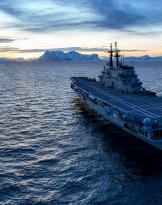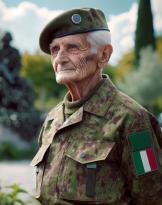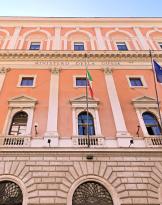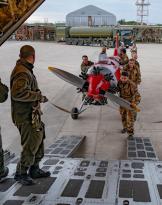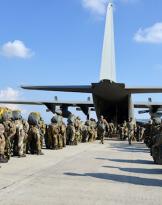Throughout history the value of the Italian soldier has been immeasurable (and still is today). Numerous were those who, in the various conflicts in which they participated, gave a demonstration of strength, courage and a spirit of sacrifice.
Unfortunately it is impossible to list them all, especially when it comes to writing a short speech, and as often happens one is forced to choose.
In this case I decided to bring to the attention a general of whom, for the record, we hear about and write very rarely: Amedeo di Savoia-Aosta, also known as the iron duke o hero of Amba Alagi.
Amedeo was born in Turin in 1898, son of Emanuele Filiberto, second duke of Aosta and of Elena di Borbone-Orléans. At the age of 15, in 1913, he enrolled in the military college of the Nunziatella in Naples.
With the entry of Italy in 1915, in the First World War, the young cadet left as a volunteer. He was assigned to the horse artillery regiment Voloire.
The conflict ended with the rank of captain; in the three years of war he received a bronze medal for military valor and a silver one.
After the war Amedeo went to Somalia (East Africa) with his uncle Luigi Amedeo, Duke of Abruzzi, and in 1921 he went to the Belgian Congo. Once back in Italy he continued his studies, and attended the faculty of law in Palermo. At the same time he resumed his military career and with the rank of lieutenant-colonel, in 1925, he was sent to Libya where he assumed important command posts. He remained in the Libyan territory for a long time, in fact in Italy he will return definitively only in 1931. In those years he will obtain the pilot's license.
In 1932, with the rank of colonel, he passed from the Royal Army to the Royal Air Force.
Following the invasion and conquest of Ethiopia by Italy in 1936, Amedeo was appointed first viceroy of the colony and, the following year in 1937, governor general of Italian East Africa.
In January 1940 he was promoted to general of the air force. During the Second World War he led the Italian troops against the British in East Africa. Its name is linked, above all, to the strenuous defense of the Amba Alagi (mountain in northern Ethiopia, in the Tigré Region) between April and May 1941.
 In that battle the Duke of Aosta with the last remaining soldiers, 7.000 between Italians and indigenous troops, resisted the siege of the British troops, about 40.000, led by General Alan Cunningham. On 16 May the British general invited the Duke of Aosta to surrender; after three days, following various negotiations, the duke and his soldiers stopped fighting and surrendered. The British, however, recognizing the courage and fervor that the Italian troops showed in the fighting, granted him the honor of arms. With May 19, the war in East Africa effectively ends. It should be emphasized that the Italian troops of General Guglielmo Nasi, withdrawn on the heights of Gondar, managed to resist until November 1941.
In that battle the Duke of Aosta with the last remaining soldiers, 7.000 between Italians and indigenous troops, resisted the siege of the British troops, about 40.000, led by General Alan Cunningham. On 16 May the British general invited the Duke of Aosta to surrender; after three days, following various negotiations, the duke and his soldiers stopped fighting and surrendered. The British, however, recognizing the courage and fervor that the Italian troops showed in the fighting, granted him the honor of arms. With May 19, the war in East Africa effectively ends. It should be emphasized that the Italian troops of General Guglielmo Nasi, withdrawn on the heights of Gondar, managed to resist until November 1941.
After the defeat of the Amba Alagi the Duke of Aosta was awarded the gold medal for military valor. Amedeo was a prisoner first in Sudan and then in Kenya. In the winter of 1942 he fell ill with malaria, and on March 3, 1942 he died in the military hospital in Nairobi. He was buried in the military cemetery of Nyeri in Kenya and his body still rests there today.
The 4th fighter wing of the Italian Air Force is named after the iron duke.
What happened at Amba Alagi is an example of what I wrote at the beginning: The value of the soldier. And sometimes it is right to remember them.
Photo: web


